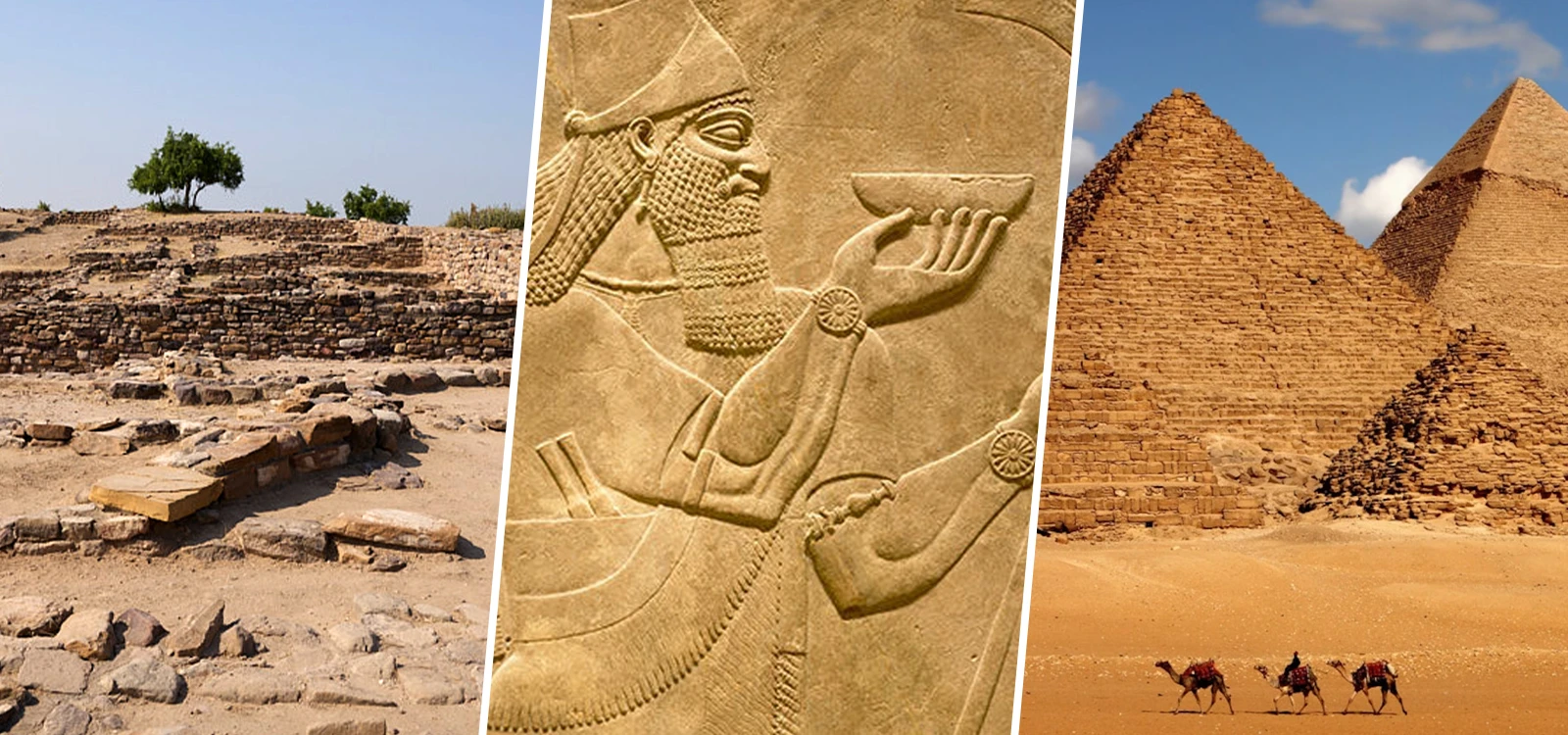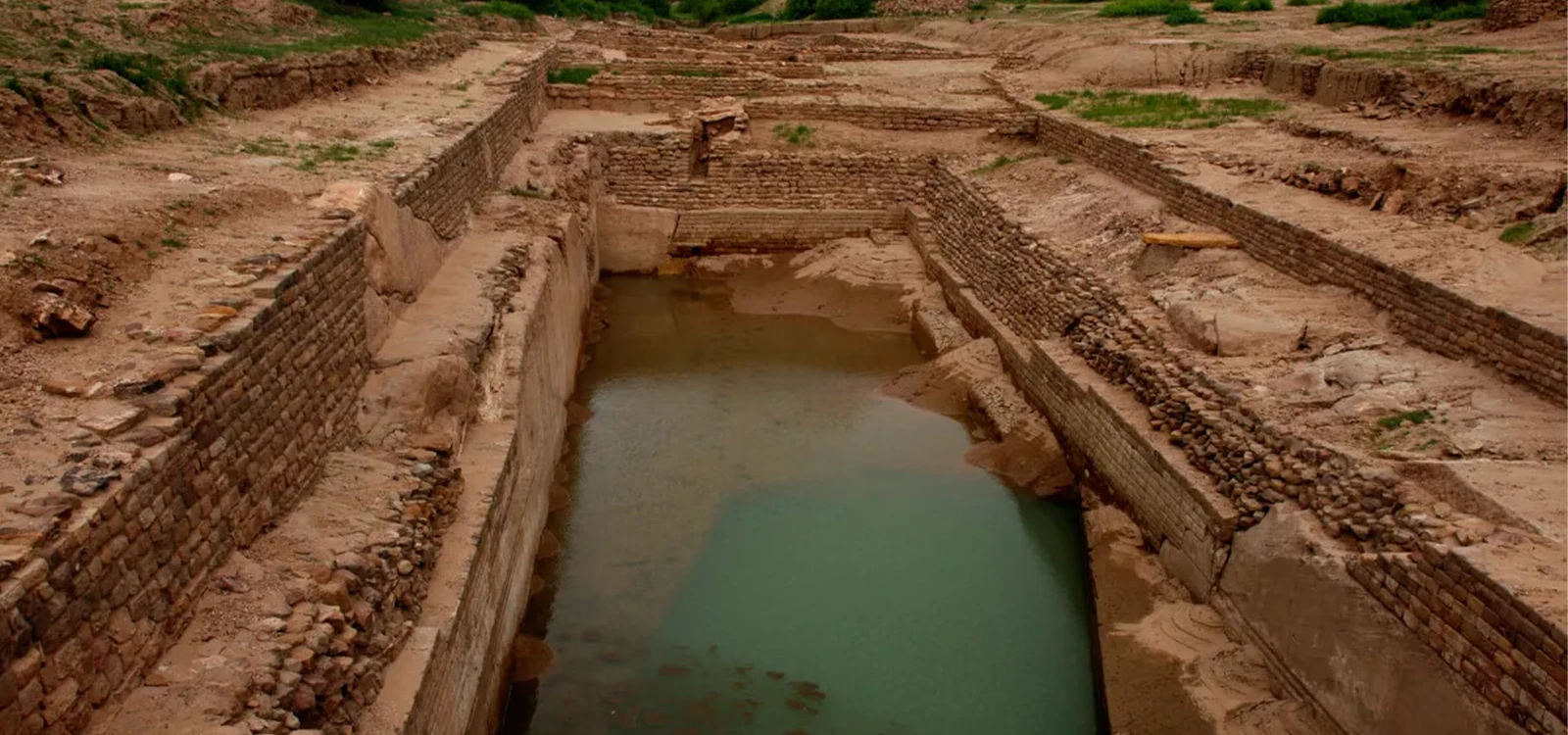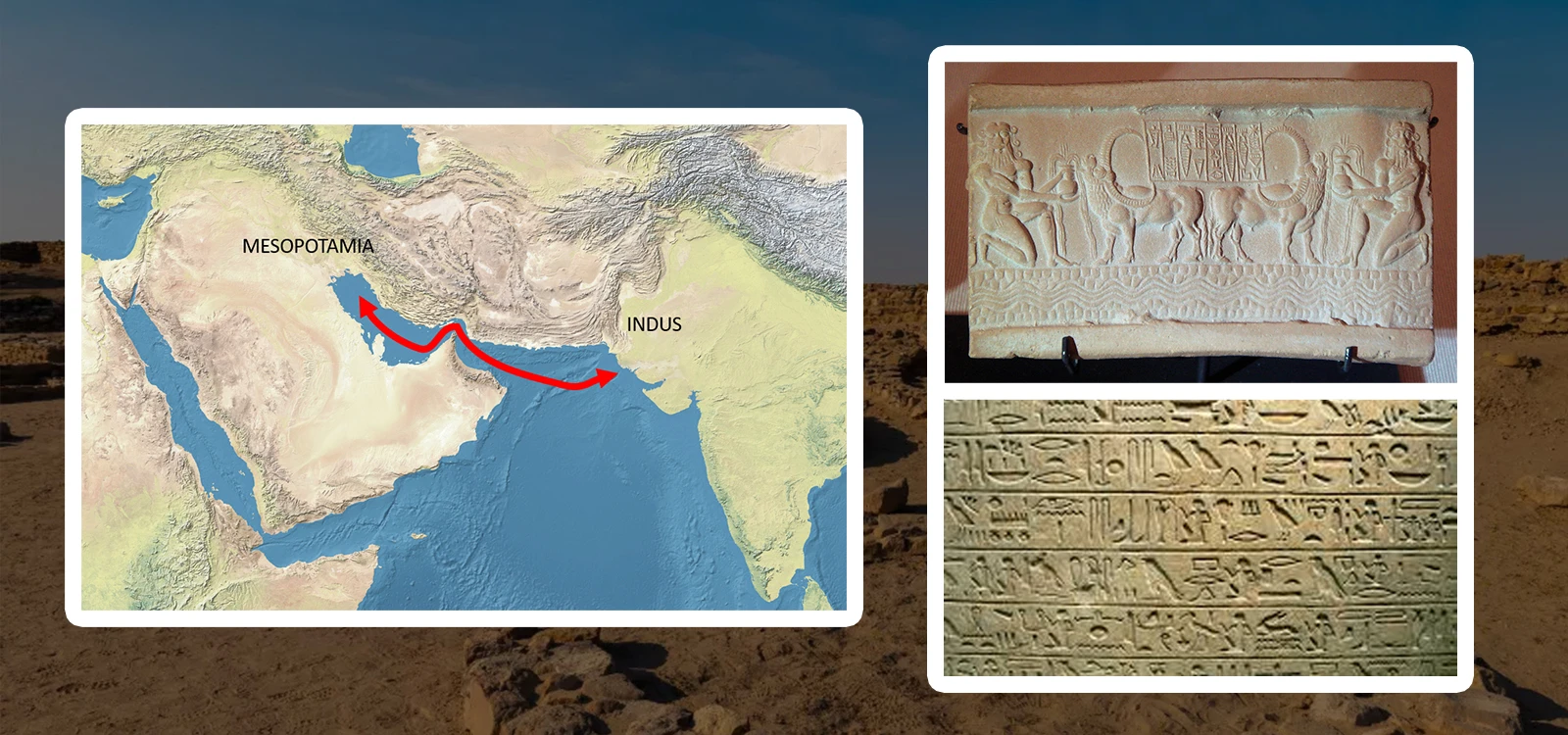Comparing Dholavira with Mesopotamia and Egypt: Cross-Civilization Insights
When we think of the world’s oldest civilizations, Egypt with its pyramids and Mesopotamia with its fertile crescent often come to mind. But there’s another equally remarkable chapter of human history written right here in India—the story of Dholavira, a jewel of the Indus Valley Civilization. Recognized as a UNESCO World Heritage Site in 2021, Dholavira stands as a proud reminder that India too was a cradle of human progress.
In this blog, we’ll dive into a fascinating ancient civilization comparison—Dholavira vs Mesopotamia and Egypt. By exploring their urban planning, water systems, trade, religion, and culture, we’ll uncover cross-civilization insights that not only highlight their brilliance but also remind us why Dholavira deserves a place on your travel bucket list. And while you plan your journey, you can experience history with comfort at Evoke Dholavira, located close to this historic treasure.
Historical Context of the Three Civilizations
Civilizations are like mirrors of human progress. Around 5,000 years ago, three major societies shaped the course of history:
- Mesopotamia (present-day Iraq) developed between the rivers Tigris and Euphrates. It is often called the “Cradle of Civilization.”
- Egypt flourished along the Nile, known for its powerful pharaohs and monumental pyramids.
- Dholavira, part of the Indus Valley Civilization, thrived in present-day Gujarat, India, and showcased some of the most unique features of urban life.
Unlike Egypt and Mesopotamia, which were river-dependent, Dholavira’s brilliance lay in building a city without a major river nearby. This already makes it one of the most extraordinary archaeological sites in India.

Urban Planning and Architecture
One striking cross-civilization insight is how all three societies valued order and design.
- Egypt built massive pyramids, temples, and tombs—grand monuments that symbolized divine power.
- Mesopotamia introduced the ziggurat, a temple tower, and designed cities with distinct religious and administrative quarters.
- Dholavira, however, is celebrated for its well-planned layout. The city was divided into the citadel, middle town, and lower town with fortified walls. Streets were laid out with precision, and houses had uniformity.
Unlike the monumental architecture of Egypt, Dholavira’s design emphasized functionality, symmetry, and sustainability, showing the unique features of Harappan urban thought.

Water Management and Agriculture
Water is the lifeline of every civilization.
- Egypt depended on the annual flooding of the Nile, which enriched its farmlands.
- Mesopotamia used canals and irrigation from the Tigris and Euphrates but struggled with unpredictable floods.
- Dholavira’s ingenuity lies in its sophisticated water conservation system. Without a large river, people here harvested rainwater, built massive reservoirs, stepwells, and channels to store and distribute water.
This shows how advanced the Harappans were in sustainability and water management—a lesson modern societies can still learn from.
Trade and Economy
Trade connected these civilizations to the world.
- Mesopotamia was a bustling trade hub, exchanging textiles, grains, and precious stones.
- Egypt traded gold, papyrus, and grain with regions as far as the Middle East.
- Dholavira was no less. Archaeological evidence shows that it traded beads, semi-precious stones, cotton, and pottery with Mesopotamia. This proves that Dholavira had cultural contact with Mesopotamia, highlighting cross-civilization insights into global trade even thousands of years ago.
The presence of imported items at archaeological sites in India like Dholavira shows how interconnected ancient societies were.

Language, Script, and Communication
Language is the voice of a civilization.
- Mesopotamia gave the world cuneiform, one of the earliest writing systems.
- Egypt used hieroglyphs, pictorial symbols that decorated temples and tombs.
- Dholavira used the Indus script, carved on seals and pottery. Though still undeciphered, its uniform use across the civilization shows widespread literacy and record-keeping.
This comparison highlights another dholavira unique feature—while Egypt and Mesopotamia’s scripts are understood, the mystery of the Indus script still puzzles scholars.
Religion and Cultural Practices
Religion shaped social life in all three civilizations.
- Egyptians worshipped gods linked to the Nile and built temples for them. The belief in the afterlife shaped pyramid construction.
- Mesopotamians believed in multiple gods linked to natural forces and practiced rituals in ziggurats.
- Dholavira’s religion is less understood, but fire altars, figurines, and burial practices suggest ritual life was important. Unlike Egypt, there is little evidence of grand temples, showing Harappans may have valued community over hierarchy in their spiritual life.
This gives us another valuable cross-civilization insight—while religion was central everywhere, its expression differed widely.
Decline of Civilizations
Every civilization has its twilight.
- Egypt faced invasions and loss of power, but its culture lasted thousands of years.
- Mesopotamia declined due to wars, invasions, and ecological challenges.
- Dholavira declined around 1500 BC, possibly due to climate change and water scarcity. Unlike Egypt and Mesopotamia, Dholavira didn’t have a sustaining river, making it more vulnerable.
Still, the remains of Dholavira’s architecture and water system remind us of its resilience and innovation.
Cross-Civilization Insights
By comparing these three great societies, we get cross-civilization insights that reveal the shared human spirit of innovation:
- Urban Planning: All three valued structured cities, but Dholavira’s sustainable design stands out.
- Water Management: Egypt and Mesopotamia depended on rivers; Dholavira created its own system.
- Trade: Global connections were active thousands of years ago.
- Cultural Expression: Religion influenced all, but each society shaped it uniquely.
- Resilience: Their rise and fall remind us that even great civilizations can be fragile.
When you walk through archaeological sites in India like Dholavira, you don’t just see ruins, you step into a dialogue between civilizations.
Conclusion
Dholavira is not just another site of the Indus Valley Civilization. It is proof that innovation, planning, and human spirit thrived here thousands of years ago, just like in Mesopotamia and Egypt.
And the best part? You don’t need to travel across the world to experience this heritage. Dholavira, with its unique features, is right here in India. When you plan your visit, Evoke Dholavira offers the perfect stay, modern comfort with a touch of history. Wake up close to an ancient world, explore a UNESCO site by day, and relax in comfort by night.
So, if you’re searching for the best archaeological sites in India to visit, make Dholavira your next stop.
FAQs – Your Questions Answered
Its unique water system, urban planning, and sustainability make Dholavira stand apart from river-dependent civilizations.
Yes, especially with Mesopotamia. Trade evidence such as beads and seals prove cross-civilization contact.
Through reservoirs, stepwells, and channels, harvesting every drop of rainwater—a brilliant dholavira unique feature.
Mesopotamia used cuneiform, Egypt had hieroglyphs, and Indus Valley Civilization had an undeciphered script.
All had structured cities, trade networks, religious practices, and innovative architecture.
Egypt is often considered the oldest, followed by Mesopotamia and then the Indus Valley Civilization.
Climate change and water scarcity made survival harder for Dholavira compared to river-based societies.
Egypt focused on monumental tombs, while Dholavira focused on functional urban design and water systems.
Yes, but its role varied—Egypt emphasized afterlife, Mesopotamia natural forces, and Dholavira community rituals.
Adaptation, sustainability, and innovation—especially Dholavira’s water management strategies—remain relevant today.

